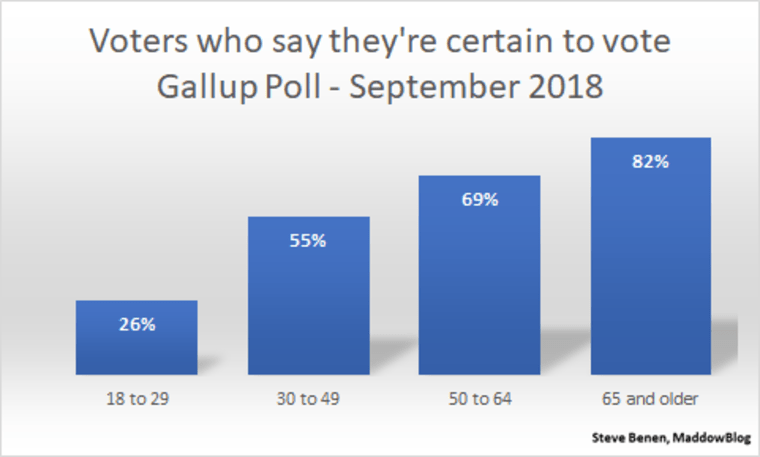The New York Times had an interesting report today exploring why so many Americans won't bother to vote in the midterm elections, despite the stakes, and despite the intensity of ongoing political tensions. Turnout is often depressed during midterm cycles -- presidential races tend to capture the public's attention -- and 2018 may well fall into the usual pattern.
There's a fair amount of evidence, however, that some voters are more likely to show up than others.
Loyola Law School's Justin Levitt yesterday highlighted the results of the latest report from Gallup, which found a majority of Americans claiming they are "absolutely certain" to vote in this year's elections. Despite months of chatter about an "intensity gap" between the parties, Gallup found roughly equal interest in the midterms among Democratic and Republican voters.
There was, however, a striking difference by age group. I made a chart to drive the point home:

This is of interest for a variety of reasons, not the least of which is the electoral effect: younger voters, a key piece of the Democratic coalition, tend to be far more progressive than older voters. Which means, of course, that the lower the turnout among voters under 30, the stronger the odds of Republican victories.
In case anyone's forgotten, the last successful election cycle for Democrats was six years ago, and in 2012, it was young voters who helped make the difference. A report from the Pew Research Center found that Barack Obama struggled among older voters in battleground states such as Florida, Ohio, Virginia, and Pennsylvania, but the Democratic president won each of these states -- with relative ease -- thanks to the overwhelming support of voters 30 and younger.
The Gallup poll was conducted two weeks ago, and it's possible that more young voters will get engaged as Election Day draws closer. If not, and Americans under 30 stay on the sidelines, the likelihood of a "blue wave" will probably be a wipeout.